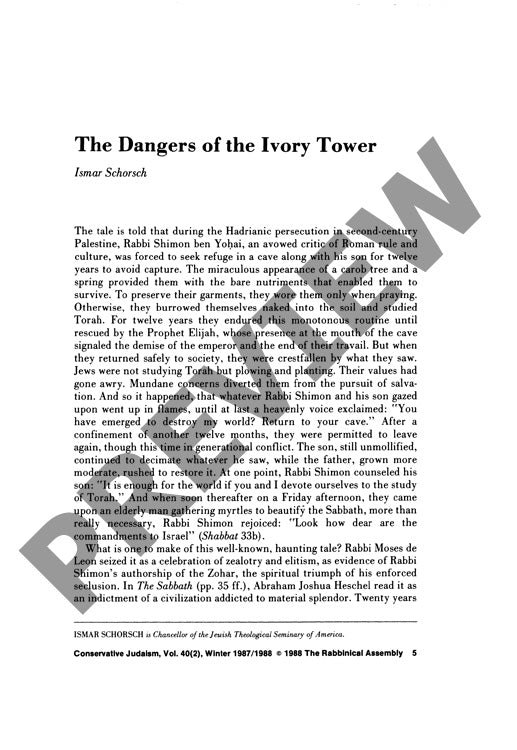The Dangers of the Ivory Tower
Couldn't load pickup availability
A famous Talmudic tale of Rabbi Shimon ben Yohai's twelve-year cave refuge has long been misread as celebrating religious zealotry, when it actually serves as a powerful warning against intellectual isolation and extremism. Through comparative hermeneutical analysis of this second-century narrative (Shabbat 33b), including interpretations by Rabbi Moses de Leon and Abraham Joshua Heschel, this research reveals how the story fundamentally critiques religious leadership divorced from communal reality. The cave becomes a metaphor for contemporary "ivory towers" - both yeshivah and university environments that foster dangerous one-dimensional thinking. Drawing on the Conservative movement's Committee on Jewish Law and Standards as a model, the analysis demonstrates that effective halakhic authority requires both deep textual knowledge and practical community engagement. Religious leaders must balance scholarly expertise with compassionate responsiveness to human needs, as serving community welfare constitutes authentic divine service. These findings challenge traditional celebratory readings of Rabbi Shimon's isolation and instead support Heschel's interpretation that the narrative deliberately condemns religious extremism, offering crucial lessons for modern Jewish leadership.

More Information
-
Physical Description
-
Publication Information
Published 1987-1988
ISBN
-
Publication Credits
Ismar Schorsch

